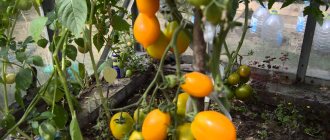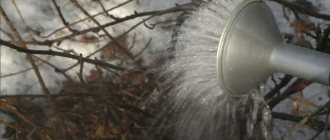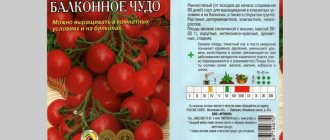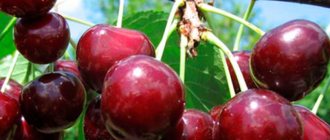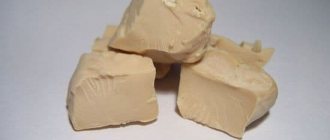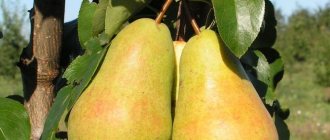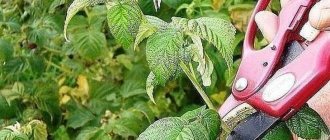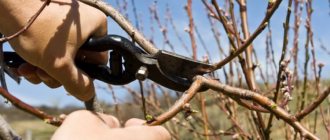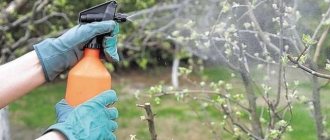Home Flowers Garden
Berry bushes spend a lot of effort on setting buds, forming ovaries, and ripening fruits. Summer residents and gardeners involved in growing the crop must know how to feed currants in the fall.
- 2 Types of currant feeding
- 3 What fertilizers are used to feed currants
3.1 Mineral fertilizers
- 3.2 Video: An interesting way to apply dry fertilizers
- 3.3 Organic fertilizers
- 4.1 Video: Detailed instructions for feeding a currant bush
What nutrients does blackcurrant need?
Fertilizing currants is the key to a good harvest
Currants grow well and delight with large berries in loose, fertile soil. If there is a lack of mineral components and organic matter in the soil, the plant is depleted and the harvest becomes poorer. It is necessary to fertilize the bush after abundant fruiting.
In the spring, when the leaves bloom and shoots form, the plant requires nitrogen. This macronutrient cannot be added in the fall - the substance is not absorbed during the cold period of the year, it can even provoke the appearance of new branches, and it will be harder for the shrub to withstand winter frosts.
Autumn fertilizing with organic matter and mineral mixtures containing potassium and phosphorus promotes:
- root development;
- increasing immunity;
- restoration of strength.
Fertilizers help the bush survive the winter safely, prepare for the formation of fruit buds, and improve the structure of the soil.
In the first ten days of September, after picking the remaining berries, black currants are fertilized with mineral complexes. It is recommended to use organic matter in the last days of October, preparing the plant for winter.
Loosening and mulching
Photo of mulching currants
Positive aspects of mulching:
- long-term retention of moisture in the soil when there is no evaporation;
- stopping the growth of weeds, therefore, they do not need to be removed and no time is wasted on this;
- softens the negative impact of low and high temperatures on the soil;
- improves soil structure, which leads to a healthy surface (no erosion) and also promotes better penetration
- nutrients into the soil, moisture retention, oxygen retention.
There are organic and inorganic mulches.
INTERESTING TO KNOW! Red spots on currant leaves
Organic mulch includes:
- grass;
- sawdust;
- needles;
- tree bark.
Inorganic mulch includes:
- spanbel;
- small crushed stone;
- lutrasil;
- agrospan;
- spunbond
Photo of mulching currants from inorganic materials
The following fertilizers must be applied under the mulch layer:
- humus;
- mineral fertilizers;
- well-rotted compost.
When mulching currants, it is important to follow the following rules for the procedure to be effective:
- layer thickness of at least 15 cm;
- there should be no seeds in the mulch, otherwise they will germinate and produce excess vegetation;
- using only healthy material.
Moisture-charging watering of currants in autumn
It has its advantages:
- moistens the soil to a decent depth;
- prevents rapid freezing and defrosting when a thaw sets in;
- stimulates the growth and development of the root suction system;
- ensures the creation of a moisture reserve in case of insufficient quantity after winter.
Attention! When watering this way, it is especially important to ensure that the water does not spread over the ground. In the presence of heavy rains, watering is halved. For clayey, dense soils, watering is reduced to 3 times.
EXCELLENT VARIETIES OF BLACKBERRY! Blackberry Black Satin Blackberry Agawam Blackberry Natchez
EXCELLENT VARIETIES OF BLACKBERRY! Blackberry Black Satin
Blackberry Agawam Blackberry Natchez
Types of currant feeding
Carried out by spraying the bush
The fruit bush responds to the introduction of nutritional components with a harvest of tasty and large berries. During the growing season, in the morning or after precipitation, foliar feeding of currants is carried out.
The leaves absorb substances, and the plant quickly assimilates them. To treat bushes, both organic and mineral mixtures are used.
Red currants, which have powerful branches and a long lifespan, require abundant root feeding. Black varieties are fertilized more often, but the plants require less nutrients.
Around the bushes, at a distance of half a meter, grooves are dug, which are moistened with water, and then fertilizers are poured in, which are absorbed by the roots. It is necessary to ensure that the nutritional components are evenly distributed under the crown of the plant, otherwise some branches will be strewn with berries, while others will bear few fruits.
What fertilizers are used to feed currants?
A month before the cold weather, you need to stop feeding currants with nitrogen fertilizers - they cause active metabolism
The shrub needs nutritional components both during the growing season and during the rest period. The roots of the plant absorb both liquids and dry mixtures.
Mineral fertilizers
This fertilizer should be applied as close to the roots as possible.
In the fall, summer residents feed the bushes with phosphate complexes. Water-soluble substances such as ammophos are suitable for any soil and are used in liquid and dry form. After applying these fertilizers:
- root growth increases;
- kidney formation improves;
- the winter hardiness of the plant increases.
Insoluble granular products are embedded in the ground at 20 grams per 1 square meter. m.
Video: An interesting way to apply dry fertilizers
Superphosphate is stored in the top layer of soil, and the roots of black currant, located shallowly, easily receive nutrition. To prepare the composition, pour 4 tablespoons of fertilizer into 10 liters of water; 3 liters of the product is enough for 1 bush.
The addition of potassium helps increase the resistance of young shoots to low temperatures and infection. When a microelement is added to the soil, not only fruit buds are formed abundantly, but also the amount of sugar in the berries increases. To feed currants, use potassium sulfate or saltpeter, combining 2 tbsp in a bucket of water. spoons of the product.
Nitroammophoska is applied in the summer; the complex is not suitable for preparing shrubs for the winter, but potassium-phosphorus mixtures are suitable for these purposes. Three spoons of the substance are sent to 10 liters of water and half is poured under the plant. You can embed granules into the ground.
The nutritional composition for feeding currants in the fall is prepared from several mineral fertilizers; this requires:
- 20 g potassium salt;
- 10 g urea;
- 2 tablespoons of superphosphate.
All substances are combined in a bucket of water and poured 5 liters under a bush, 2 liters under a seedling or young plant.
Plants are fed with this fertilizer as late as possible.
Organic fertilizers
The addition of mineral complexes helps currants survive unfavorable conditions. To improve the structure and fertility of the soil, organic matter is used. Most often, fruit trees and shrubs are fed with manure. In order for the fertilizer to rot, it is placed in stacks on polyethylene, covered on top, and when used, mixed with water in a ratio of 1 to 5.
Dry manure is used to mulch the ground in the tree trunk circle of the bush. Fresh mullein is left to ferment for 3 days, filled with the same amount of liquid, and then with water in a ratio of 1 to 10. To feed one young plant, use 2 to 5 liters of fertilizer, for an adult - up to a bucket.
Summer residents usually do not throw away weeded weeds, grass, and food residues, but prepare compost from them, which they cover the ground under the bushes and use it for autumn topping.
It is not recommended to fertilize currants with chicken droppings every year. To prepare the nutritional composition, mix 1 part of the product with 12 parts of water. No more than 3 liters of an organic compound is poured under the bush.
Chicken manure is a source of nitrogen
In autumn, wood ash is poured into the tree trunk of the plant. The fertilizer is rich in the following elements:
- calcium and sulfur;
- zinc and iron;
- iodine and magnesium.
All components of organic matter are easily absorbed by the roots and serve as food for beneficial bacteria that loosen the soil. A glass of ash is infused in 10 liters of water and added to the currants in the fall along with manure.
To improve the soil structure, green manure in the form of alfalfa and lupine is sown in the summer. In October, the grass is dug up and the ground is irrigated abundantly.
Preparing for winter
Autumn care involves preserving shrubs for the long winter months. Preparation for winter includes not only trimming excess green mass and applying fertilizers, but also mulching the soil.
Covering the courses with sawdust
Cover the ground with a layer of sawdust, bark and straw after fertilizing. The thickness of the mulch is up to 10 cm. The protective layer will maintain the optimal level of humidity and prevent the soil from freezing.
If the winter is snowy, throw more snow on the bushes and compact them lightly. This is also a type of shelter.
Shelter in the Northern regions
Even if full autumn currant care is carried out, there is no guarantee that all bushes will survive extreme climatic conditions. In the northern regions, additional plant cover is recommended:
- Collect the shoots and carefully bend them to the ground, tying them with a rope and a load. Another option is to stick a peg nearby and secure the shoots around it.
- Wrap the currants in a breathable covering material, available at garden centers. To protect from the wind, tie the bushes over the fabric.
- In the spring, remove the agrofibre as early as possible so that the soil begins to warm up.
Caring for a currant bush in the fall can take a lot of time, but don’t let this scare the gardener: experience suggests that a plant reliably protected in winter grows better, blooms and bears fruit with large, sweet berries.
Differences between feeding a young and an adult bush: calculating the required amount of fertilizer
Fertilizer rates depend on the age of the plant
Both organic matter and mineral complexes are carefully added to moist soil, which helps avoid damage to the roots. Currants planted in the spring are fed with mineral fertilizers in the fall. One young berry bush requires 50 g of superphosphate and 10 g of potassium sulfate. The consumption rate of mixtures per 1 sq. m of area for a one-year-old currant bush - 10 grams, for an adult plant - 20.
In dense soil, nutritional components are retained in the top layer much longer than in peat bogs, sandy soils, and mineral fertilizers for mature currants can be applied once every three years, it is better to do this in the fall. For one plant, use 150 g of superphosphate and 40 grams of potassium sulfate.
When feeding with organic matter, 3 or 4 liters of liquid solution are used on a young bush, and up to 10 liters on adult currants. Manure or compost is applied annually if the plant is planted in sandy soil.
Video: Detailed instructions for feeding a currant bush
After fertilizing, the soil under the bush needs to be loosened and watered, and also to get rid of weeds that take away moisture from the currants. Fertilizers should not be applied by eye - the dosage should be adhered to.
- Author: madam22
Rate this article:
- 5
- 4
- 3
- 2
- 1
(6 votes, average: 3.8 out of 5)
Share with your friends!
Autumn pest and disease control
Treatment against pests and diseases is an important stage in caring for currants in the fall. After harvesting, you need to carefully inspect the currant plantings. Most often, shrubs are affected by bud mites and powdery mildew.
How to deal with kidney mites
The pest most severely affects blackcurrant bushes. But white and red currants may also be affected.
- In infected bushes, the buds do not bloom in the spring, but dry out. This causes a decrease in yield, the normal development of bushes is disrupted, and the plants die.
- Another harm of the tick lies in the fact that it transmits mycoplasma disease (terry disease).
The tick overwinters and develops inside the kidneys. In affected plants, the buds become larger and take on a rounded shape. Infection and spread of pests occurs through planting material, due to strong winds, birds, and insects.
If there are 2-3 diseased buds on a branch, then they must be removed. If there are more such buds, then the entire branch is cut off.
Modern means - bioacaricides - also effectively destroy bud mites. The most popular drugs:
- "Biocol"
- "Akarin"
- "Fitoferm".
When using them after harvesting, it is necessary to take into account that the drugs act at elevated air temperatures (from 15 to 19˚C). In windy, cool autumn weather they are useless.
After the end of the fruiting period, you can use pesticides with a strong effect. Acaricidal drugs:
- "Rotor-S"
- "Phosfamide"
- "Nitrafen".
As a preventive measure, it is recommended to regularly weed currant plantings. After sanitary pruning, fallen leaves and branches are immediately removed and burned.
How to protect yourself from powdery mildew
A fungal disease develops on foliage, branches, and sometimes affects fruits. The disease most affects blackcurrant varieties. Diseased bushes tolerate frosts worse, lose endurance and bear fruit significantly less.
The fungus survives in fallen leaves and overwinters well. That’s why fallen leaves and cut branches are always burned.
Visually, the disease appears as a white coating on the leaves. There are several reasons for the appearance of powdery mildew:
- damp and cloudy weather;
- frequent watering of bushes;
- if infected plants grow near the currants.
If gray-brown leaves are found on the tops of the shoots, it is necessary to treat the bushes with a special solution after harvesting. 40 g of sulfur, 1 tbsp are diluted in eight liters of water. tar soap. When processing currants, you should try to ensure that the solution gets on both sides of the leaves. The twisted tops of the shoots must be cut off and burned. The treatment is carried out 2-3 times.
Experienced gardeners recommend using different preparations:
- "Skor"
- "Previkur"
- "Fundazol".
If the plant is thoroughly infected, then all diseased branches are cut out. It is also recommended to replace the top layer of soil around the bush. Because spores can persist in the soil and re-infect the treated plant. As an additional measure, you can spray the soil around the trimmed bush with a 3% Nitrophen solution.
Preventative treatment
Cold, dry and windless weather is an excellent time for another stage of caring for currants in the fall - spraying the bushes. At the same time, protective equipment will not be washed off by precipitation, and low temperatures will prevent the development of diseases. The bushes are carefully inspected before processing. Damaged branches and leaves must be removed and burned.
- Bordeaux mixture (1% solution), karbofos, and copper oxychloride are used as prophylactic agents.
- Supporters of organic compounds can treat bushes with infusions of garlic, tobacco, and onion peels. It should be borne in mind that herbal preparations can stop the reproduction of pests, but do not completely destroy them.
Gardeners recommend planting currant plantings with garlic or onions, since mites cannot tolerate their smell.
The best option is to plant varieties that are resistant to diseases and pests: black currant Vernissage, red currant Ural Beauty, and white currant Pink Pearl, Imperial yellow.
